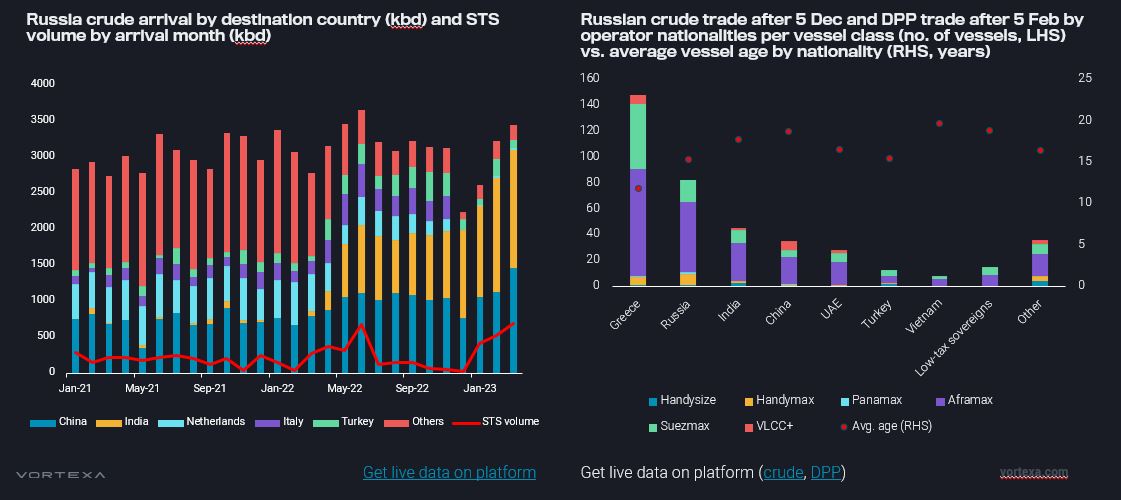At the macro level, a key question on the minds of market participants is whether the world is short or long on oil? Before OPEC’s announcement of additional voluntary production cuts this month, our data already pointed to a tighter global crude market – as seen from a steady decline in onshore inventories in recent weeks, particularly in the US and China. Further production cuts by OPEC+ members could tighten the market, but the impact could be moderated by a smaller reduction in exports compared to the announced cuts (as we learned from the previous round) and a slowdown in global oil demand.
As Russia’s oil reshuffle continues, some trading patterns are solidifying. India and China have emerged as the top strategic trading partners for Russia, accounting each one-third of total arrivals of Russian oil in March. In considering the alternative markets for Russian oil after the EU ban, we see an interesting distinction of crude, naphtha and fuel oil exports being concentrated among a handful of destination countries in Asia and the Middle East, whilst diesel supplies have headed towards more diverse markets including Saudi Arabia, Turkey, Brazil etc.
The dirty and clean tanker fleet supporting the Russian trade has also expanded in recent months. Nearly 20% of the global Aframax and Suezmax tanker fleet is now involved in the Russian crude and residual fuel oil trade, and increasingly shifting towards operating exclusively in Russian trade. Similar behaviour is seen in the clean tanker segment, particularly in MR tankers, which has consequently reduced the size of the mainstream tanker fleet and added more volatility to freight rates in recent weeks.

Russia’s crude flows and dirty tanker freight analysis
Meanwhile, China’s re-opening has boosted domestic crude consumption, which reflected in higher crude imports and slowing product exports, particularly in March. Weak export margins and ongoing refinery maintenance are, however, capping further upsides currently. Faced with growing competition for Russian ESPO blend and tighter Venezuelan crude supplies, China’s independent refiners are increasing purchases of Iranian crude and condensate, as well as Russian residual fuel oil as supplementary feedstock.
Both clean and dirty tanker rates have firmed in the first quarter of this year, buoyed by higher Chinese crude imports, the reshuffling of Russian trade flows and the knock-on shifts in oil flows to Europe. A potential reduction in OPEC+ crude exports and a slowdown in global oil demand could weigh on tanker rates going forward, with VLCCs facing the highest exposure. A seasonal uptick in US gasoline demand and higher agricultural diesel demand in Brazil this summer could support MR tanker rates in the Atlantic Basin, whilst a slowdown in clean product exports in Asia would weigh on tanker rates in the region, driving a re-positioning of a portion of the MR fleet from the Pacific towards the Atlantic Basin.